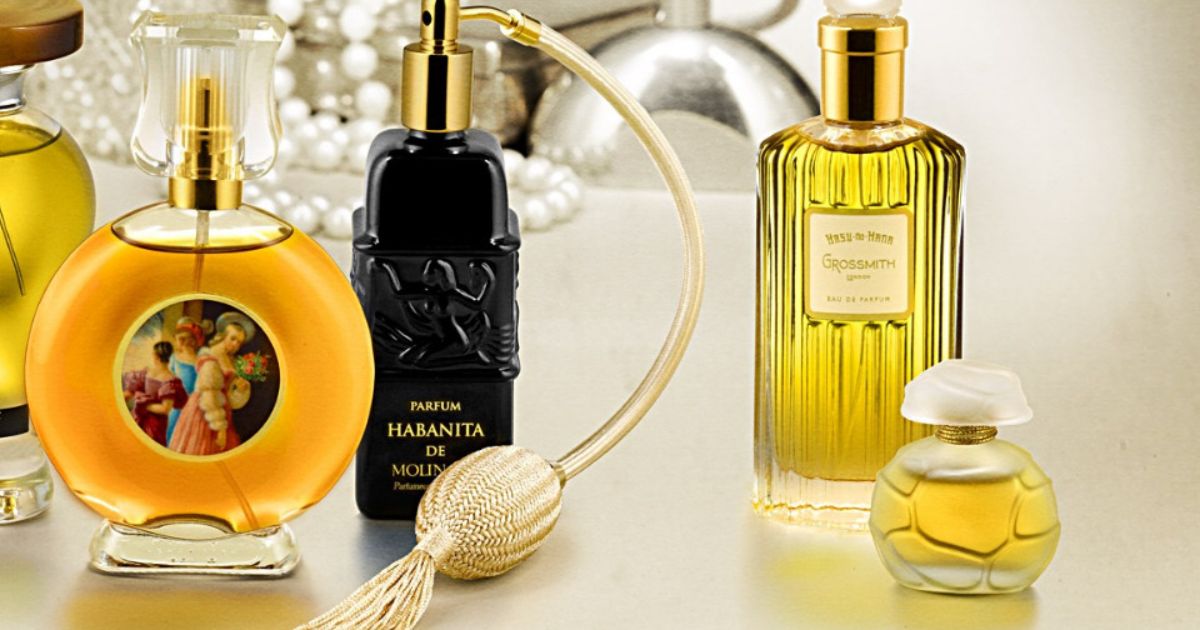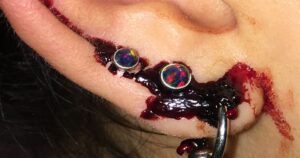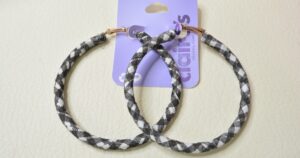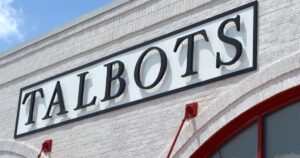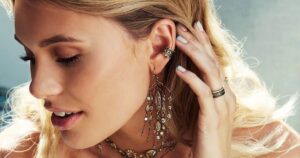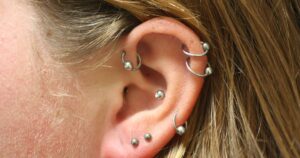Step into a fragrant time capsule, as we embark on a olfactory journey through the perfumes of the past. Delve into the intoxicating Floral Frenzy of the 60’s, where nature’s blossoms became the essence of femininity. Immerse yourself in the opulent decadence of the 70’s, where fragrances veered towards sensuality and indulgence. Then, brace yourself for the powerhouse perfumes of the 80’s, where boldness and confidence were bottled. Join us as we explore the iconic fragrances that defined these transformative decades, igniting a scented revolution that still lingers today.
Key Takeaways
- The perfume industry in the 60’s saw a shift towards more feminine and romantic fragrances, with Chanel No. 5 and Diorissimo revolutionizing the industry.
- The 70’s embraced the sensuality and freedom of the era, with perfumes like Opium and Charlie becoming popular. These fragrances were characterized by rich and opulent notes.
- The 80’s saw the rise of bold and assertive perfumes, with long-lasting scents and iconic packaging. These powerhouse perfumes demanded attention and were synonymous with glamour and extravagance.
- Iconic fragrances like Chanel No. 5 and Dior Eau Sauvage continue to captivate the senses and symbolize the elegance of the 60’s. The 70’s brought about a scented revolution with increased sales, celebrity endorsements, and the exploration of new ingredients.
The Floral Frenzy of the 60’s
During the floral frenzy of the 60’s, iconic scents like Chanel No. 5 and Diorissimo revolutionized the perfume industry with their intoxicating blend of blossoming notes. This era was marked by a shift towards more feminine and romantic fragrances, reflecting the changing social and cultural landscape of the time. The floral scents became synonymous with elegance, sophistication, and femininity, appealing to women who desired a sense of belonging and identity. Chanel No. 5, with its timeless blend of jasmine, rose, and ylang-ylang, captured the essence of femininity and became a symbol of luxury. Diorissimo, on the other hand, focused on the purity of lily of the valley, evoking a sense of freshness and innocence. These fragrances not only captured the spirit of the 60’s but also set the stage for the evolving perfume industry in the years to come.
Diving Into the Decadence of the 70’s
Amidst the disco era’s vibrant and extravagant atmosphere, perfumes like Opium and Charlie captivated the senses with their bold and alluring compositions. In the 1970s, the fragrance industry continued to embrace the sensuality and freedom of the era, creating scents that embodied the decadence of the time. These perfumes were characterized by their rich and opulent notes, reflecting the desire for excess and indulgence. Perfumes such as Giorgio Beverly Hills and Poison became iconic representations of this era, with their intoxicating blend of sweet florals, spicy accords, and woody undertones. The 70s marked a shift towards stronger and more assertive scents, reflecting the growing empowerment of women during this time. As we move into the 80s, the powerhouse perfumes of this decade would continue to push the boundaries of fragrance, embracing even bolder and more daring compositions.
Powerhouse Perfumes of the 80’s

The powerhouse perfumes of the 80’s, with their bold and assertive compositions, became synonymous with glamour and extravagance. These fragrances were created to make a statement, to leave a lasting impression. They were designed for those who wanted to stand out in a crowd and exude confidence. Here are four key characteristics of the powerhouse perfumes of the 80’s:
- Rich and opulent notes: These fragrances were often composed of a complex blend of floral, oriental, and woody notes, resulting in a luxurious and decadent scent.
- Long-lasting and strong sillage: Powerhouse perfumes were known for their longevity and projection, ensuring that the wearer would leave a trail of fragrance wherever they went.
- Unapologetic and assertive presence: These fragrances were not meant to be subtle or understated. They demanded attention and made a bold statement.
- Iconic packaging: The bottles of powerhouse perfumes were often as extravagant as the scents themselves, featuring bold shapes, vibrant colors, and intricate designs.
In the world of fragrance, the powerhouse perfumes of the 80’s will always be remembered for their unapologetic glamour and larger-than-life presence.
Iconic Fragrances That Defined the 60’s
Some iconic fragrances from the 60’s, such as Chanel No. 5 and Dior Eau Sauvage, continue to captivate the senses with their timeless appeal. These fragrances were not only popular during their time, but they also left a lasting impression on the world of perfumery. Chanel No. 5, introduced in 1921, remains a symbol of elegance and femininity. Its blend of floral and aldehydic notes creates a sophisticated and timeless scent that has stood the test of time. Dior Eau Sauvage, launched in 1966, revolutionized men’s fragrances with its fresh and citrusy aroma. Its combination of bergamot, lemon, and vetiver creates a vibrant and masculine fragrance that remains popular today. These fragrances represent the essence of the 60’s and continue to hold a special place in the hearts of perfume enthusiasts, offering a sense of belonging and connection to a bygone era.
The Scented Revolution of the 70’s
Many fragrance houses experienced a significant increase in sales during the scented revolution of the 70’s, as consumers eagerly embraced the new olfactory trends and sought out unique and captivating scents. This era marked a turning point in the fragrance industry, with several key factors contributing to its success:
- Celebrity endorsements: Perfume became synonymous with glamour and luxury, as celebrities like Elizabeth Taylor and Sophia Loren endorsed and launched their own fragrance lines.
- Exploration of new ingredients: Fragrance houses began experimenting with unconventional ingredients, such as patchouli, sandalwood, and musk, creating iconic scents like Chanel No. 5 and Calvin Klein’s Obsession.
- Unisex fragrances: The 70’s challenged traditional gender norms, leading to the rise of unisex fragrances that appealed to both men and women. This allowed individuals to express their individuality and reject societal expectations.
- Creative marketing campaigns: Fragrance houses tapped into the cultural zeitgeist of the 70’s, using innovative marketing strategies that incorporated music, fashion, and art to create a sense of belonging and authenticity.
Overall, the scented revolution of the 70’s revolutionized the fragrance industry, paving the way for future trends and innovations.
Frequently Asked Questions
What Were the Popular Perfume Brands in the 60’s, 70’s, and 80’s?
During the 60’s, 70’s, and 80’s, several popular perfume brands emerged. These included iconic names like Chanel No. 5, Dior’s Miss Dior, Estée Lauder’s Youth Dew, and Calvin Klein’s Obsession. These fragrances defined the era with their unique scents and captivating allure.
Are Any of the Perfumes From the Past Still Available for Purchase Today?
Yes, some perfumes from the past are still available for purchase today. They have retained their popularity and iconic status, appealing to nostalgia and a desire for a sense of connection with the past.
How Did the Perfume Industry Evolve Over the Decades?
Over the decades, the perfume industry has witnessed a remarkable evolution. From the opulent fragrances of the past to the modern interpretations today, it has adapted to changing tastes and trends, while maintaining its allure and sense of belonging.
Were There Any Specific Ingredients or Notes That Were Commonly Used in Perfumes During These Time Periods?
During the 60’s, 70’s, and 80’s, the perfume industry saw a variety of ingredients and notes commonly used. These included floral scents like rose and jasmine, as well as musky and woody notes.
Did Societal Changes or Cultural Movements Influence the Popularity of Certain Perfumes in the Past?
Societal changes and cultural movements have indeed influenced the popularity of certain perfumes in the past. The shifting values, aesthetics, and desires of the time shaped the demand for fragrances that reflected these evolving sensibilities.
Conclusion
In conclusion, the perfumes of the 60’s, 70’s, and 80’s left an indelible mark on the world of fragrance. From the floral frenzy of the 60’s to the decadence of the 70’s and the powerhouse scents of the 80’s, these decades were defined by iconic fragrances that revolutionized the industry. As the adage goes, “Scent is a powerful force that can transport us to different times and evoke emotions long forgotten.” The perfumes of the past continue to captivate and inspire us today.
